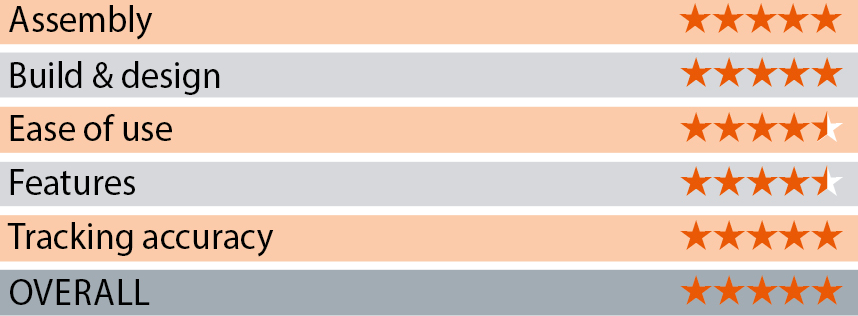FIRST LIGHT
Sky-Watcher AZ-GTiX dual-saddle mount and tripod
An app-controlled, lightweight setup that offers double the mounting capacity
VITAL STATS
• Price £399 mount head; £479 with tripod
• Payload capacity 6kg; 10kg using both saddles
• Tracking mode Dual-axis tracking
• Tracking rates No tracking, sidereal, lunar, solar, Point and Track
• Slew speeds 0.5x, 1.0x, 8.0x, 16x, 32x, 64x, 128x, 400x, 800x
• Power: 8x AA batteries or 7.5V–14V DC external power
• Extras L bracket, additional telescope saddle, extension pier
• Weight Mount head 2kg; with tripod 5.2kg
• Supplier Optical Vision Ltd
• Email info@opticalvision.co.uk
• www.opticalvision.co.uk
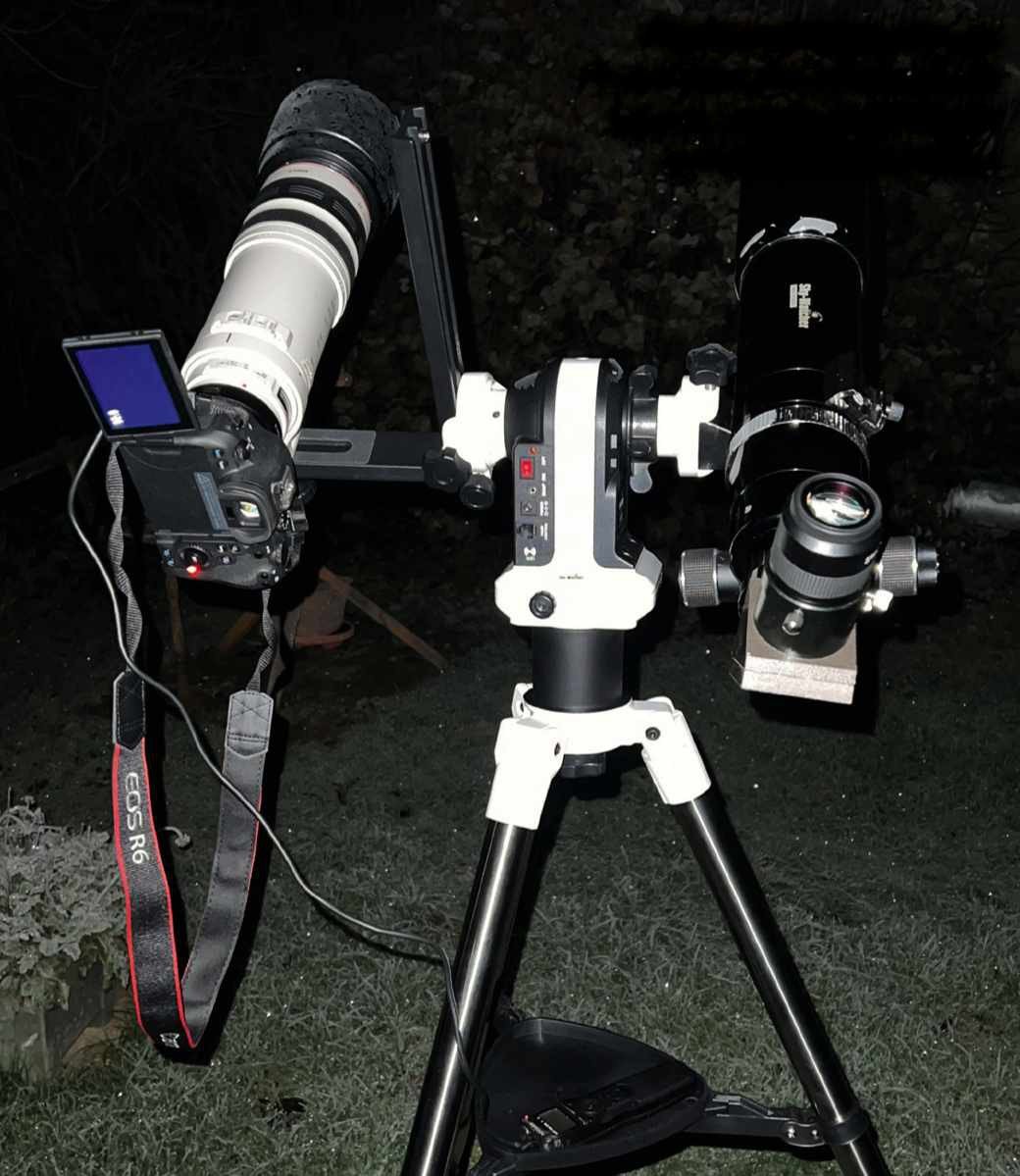
We’re used to seeing equatorial mounts of varying sizes and capacities, along with equatorial tracking mounts for lightweight setups and ease of transport. Here we explore the latest offering from Sky-Watcher that does away with the need to polar align and instead provides a lightweight portable altaz mount, the AZ-GTiX.
Our review package included the AZ-GTiX mount and tripod with extension pier, plus an L bracket for attaching either a camera or another telescope. This mount is a dual-saddle mount, one where you can have two telescopes or a combination of equipment on just one mount. Its load capacity enables one lightweight telescope up to 6kg on one saddle or up to 10kg total weight if using both saddles.
The mount has an integrated Wi-Fi adaptor to provide its own network so that you can control the mount via the downloadable SynScan app or, if you prefer, you can attach an optional SynScan hand controller. For our tests we operated it as intended via the app, which is suitable for iOS or Android operating systems.
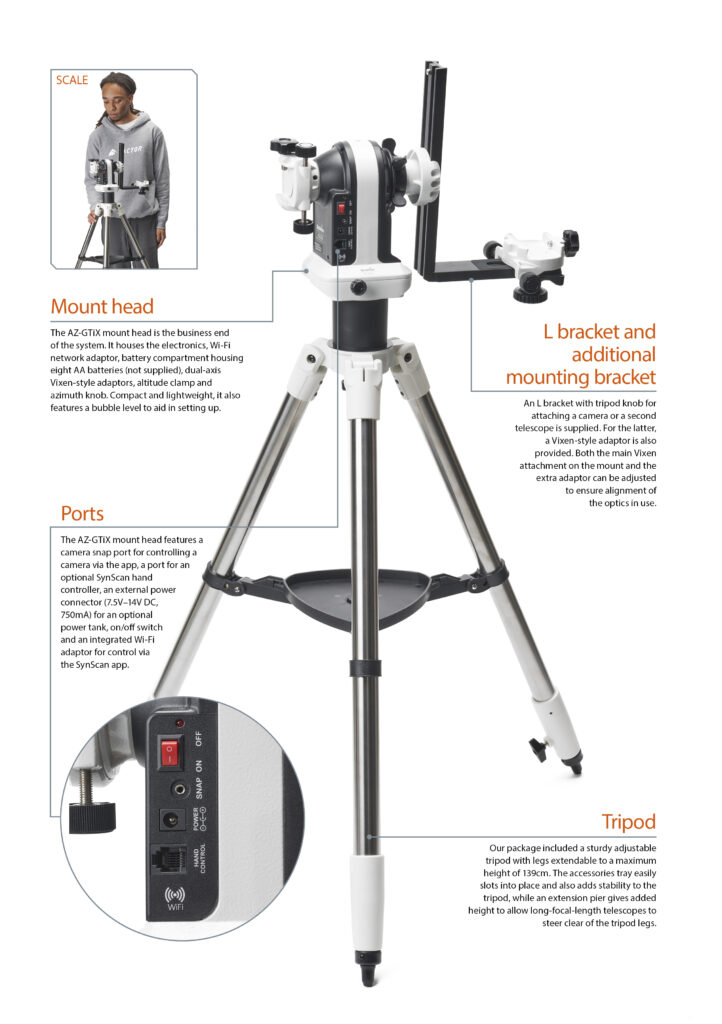
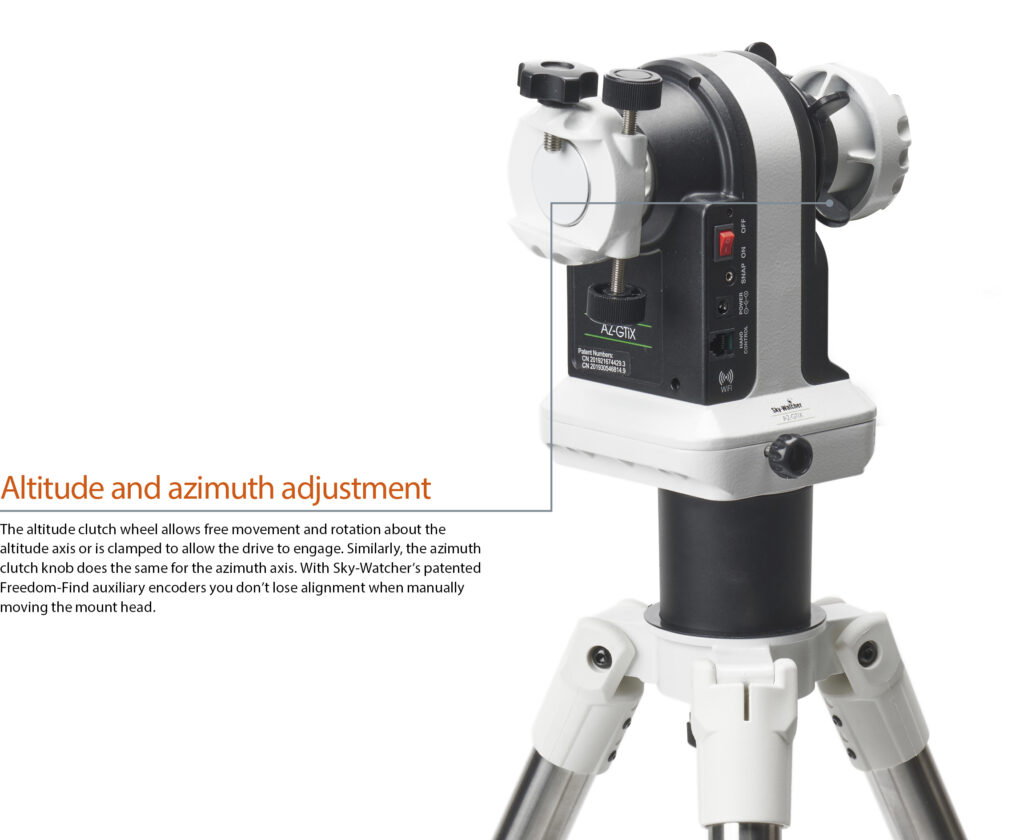
It takes two, baby
Power is provided either by eight AA-type batteries nicely hidden away in the body of the mount or via an external power supply, such as the typical power tanks provided for astronomical mounts. For our tests we used batteries and despite extensive testing during a particularly cold spell, the mount was still operational at the end of the review period. That’s really good news for anyone wishing to use this in the field at a remote dark-sky site.
The versatility of the AZ-GTiX mount with its dual saddles meant we could set it up either with a single telescope, single camera setup, camera and telescope, camera and camera with different lenses, or two telescopes. With the telescopes, we could use one for viewing and one for astrophotography. We also set it up during daytime for solar viewing with a hydrogen-alpha telescope on one saddle and a white-light telescope on the primary saddle – useful, for example, for public events around a solar eclipse.
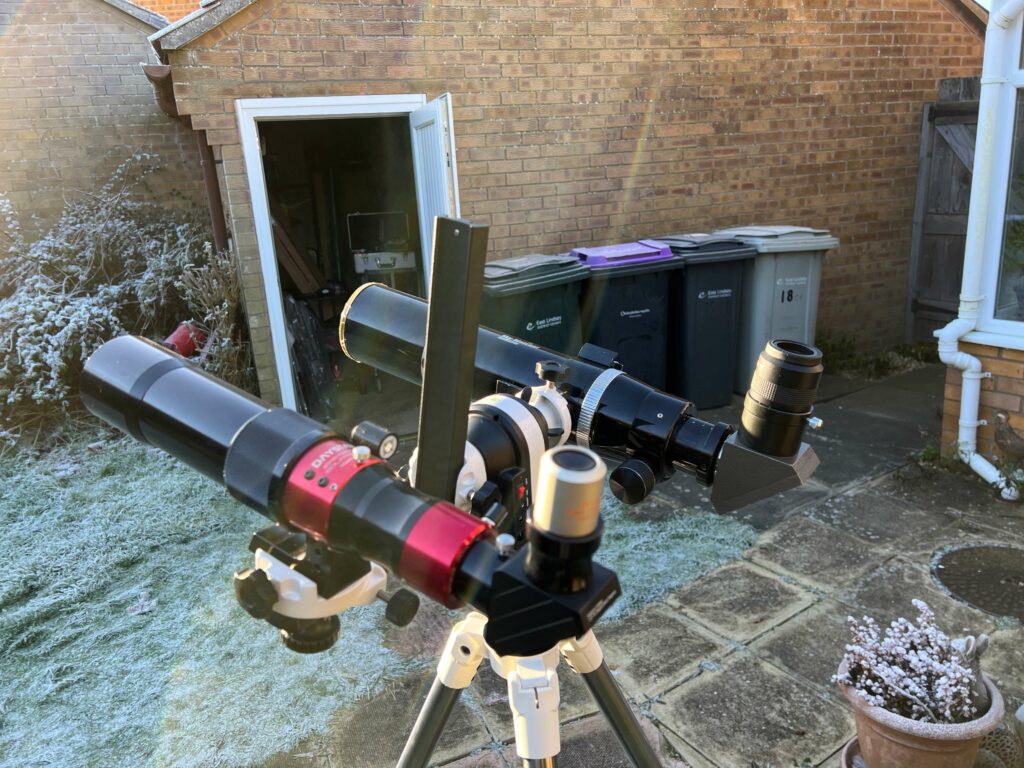
Attachment of the mount to the tripod is via a 3/8-inch thread, so photo tripods can be used; you can buy the mount without a tripod if you already own something suitable. We found the tripod supplied for our review perfect for the mount and the supplied extension pier added a little extra clearance for longer-focal-length telescopes, so they don’t catch on the tripod legs.
Initial setup involved aiming the mount with our telescope level and pointing north, then powering up and connecting the SynScan Pro app via the mount’s Wi-Fi network. In the settings, we ensured the app had fixed upon our location and then all that was needed was to perform a star alignment. Using our Equinox 80ED refractor and 26mm eyepiece, we then proceeded on a tour of over 20 targets in the winter sky, with almost all centred close to the central 50 per cent of the view.
We placed a camera and large lens on one saddle and the telescope on the other and centred it on M45, the Pleiades star cluster, leaving it tracking while the camera took exposures and we periodically checked the view. The mount kept M45 at the centre of the view for 50 minutes, and the images we later processed showed that you can do astrophotography with this mount with short exposures. We also tested the AZ-GTiX’s Point and Track feature, whereby without alignment you start up and aim the telescope at your target and leave it tracking. We did so on the Moon and, again, 20 minutes later it was still centred.
Overall, we were very impressed with this lightweight mount and found we quickly turned to it first for our observing and imaging sessions. We can highly recommend it.
Built-in Wi-Fi and app
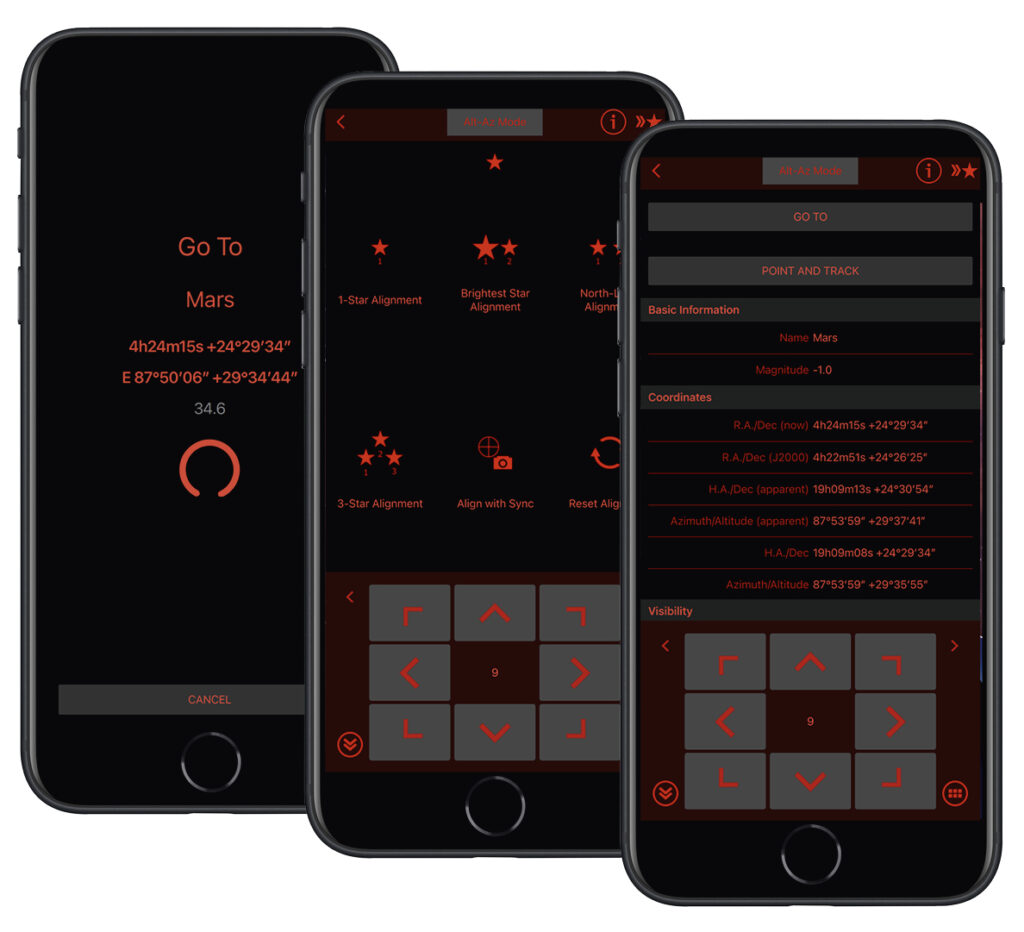
The heart of the system is the intuitive and easy-to-use Wi-Fi adaptor and the SynScan Pro app that controls the mount. In your smartphone settings, choose the SynScan network and connect to it, then open the SynScan Pro app. Tap ‘Connect’ and you’re given a multitude of options to play with. Ideally use the star alignment facility to ensure good pointing accuracy and tracking. For best results, we used the three-star alignment and made a point of always choosing Polaris as the first. This helps in reaffirming that the setup is indeed pointing north.
Once aligned, you have multiple targets to choose from including Messier, NGC, IC, Caldwell and named deep-sky as well as Solar System objects, named stars, double stars and even comets. The Point and Track feature is interesting in that as long as ‘location sensor’ is turned on in the settings you can point the scope manually to a target to track it – useful if you don’t have time to do an alignment.
KIT TO ADD
1. Synscan handset and cable
2. 17Ah power tank
3. L bracket for second saddle
VERDICT
